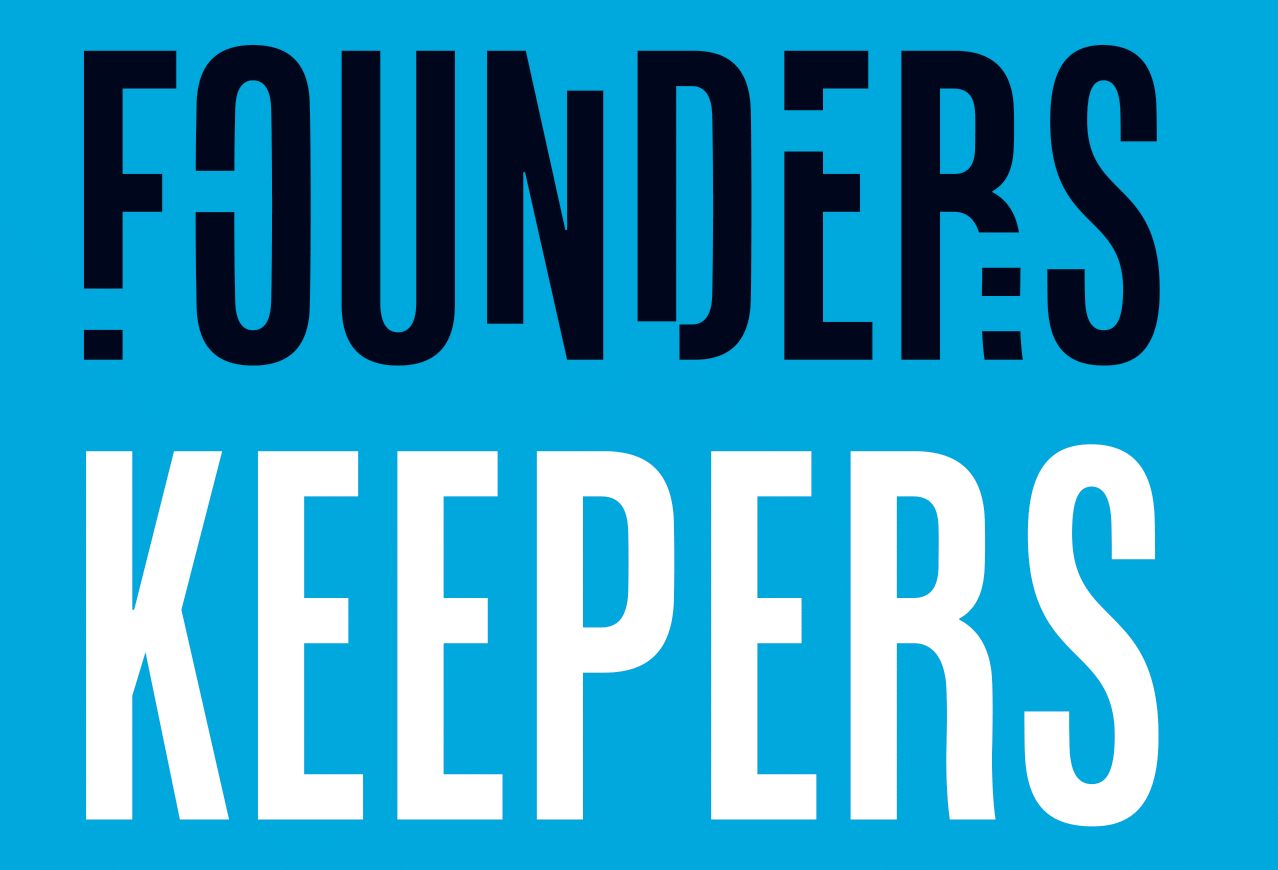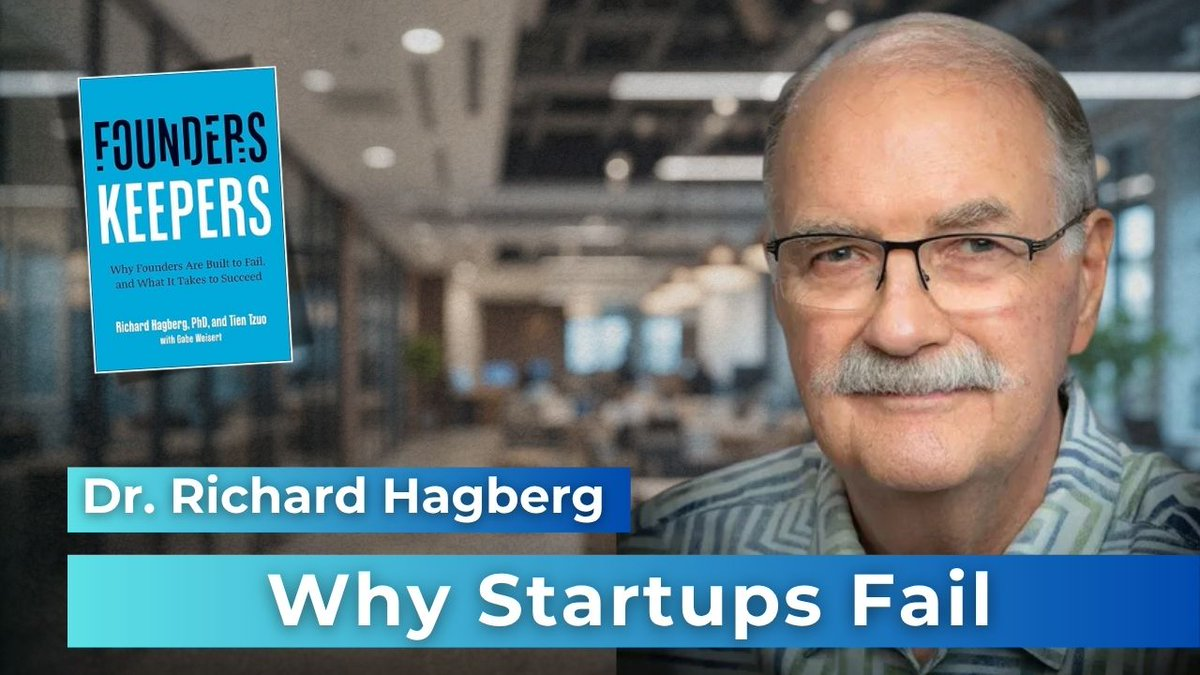Article
Creating Buy-in
May 1, 2024

Getting Buy-in For Your Initiatives
Creating Buy-In
There’s a common understanding that executives are hired to make decisions. True enough. But they are also hired to insure that the decisions are implemented. Coming to a decision – choosing a direction, formulating a strategy or deciding on an action plan – is difficult enough in these complex times. Getting people to buy in – to understand, accept, and align behind the plan - is another matter.
Nobody creates a successful business alone No matter how brilliant or visionary you are, how innovative your ideas or your product, you need other people to help you transform your vision into reality. Leaders get results by working through others.
You need cooperation and support for your initiatives from investors, employees, and other stakeholders if you are to lead successfully and accomplish your goals.
The authoritarian leadership style is a dinosaur We no longer live in a world where the person at the top can dictate terms to followers and employees and automatically get his or her way. It doesn’t work like that. Leaders on every level operate in a complex web of relationships and inter-relationships. They have to work with people who have differing agendas, viewpoints, and leadership styles, and need to find ways of working together to achieve common goals.
So you need to create buy-in One of the ongoing challenges you will face as a leader is creating buy-in – getting the people whose support you need as fired-up as you are about what you are creating together. People who take on your vision as their own, who will enthusiastically put in the hours and the focus because they believe in you and your objectives and truly want to see your idea come to life. The more your agenda becomes theirs, something they want to achieve because they believe in it, the better your chances of success. How will you do it? This will not happen by itself. How will you light the fire that will make people passionate about building the organization needed to realize your dream? How will you enlist the cooperation of those who are not passionate, but whom you need on your side?
And how will you avoid the pitfalls that get in the way?
Here are some ideas that are relevant both for specific projects that you want to pursue, and for the overall success of your organization.
Steps to create buy-in:
Determine what you want
Creating buy-in first requires knowing what you want (your goals, priorities, and needed resources). So, before trying to present your idea or suggest an action, it’s important to carefully think through your proposal. Ask yourself:
If you need an individual or group to buy in to your idea or initiative, set up a meeting and prepare for it carefully. Don’t impulsively jump into action before you have your plan thought through.
Know what you want to achieve.
Before you meet, make a list of all the people your proposal will affect. Talk to key players to find out how they think and what they want:
Try to understand the person or persons you want to influence One factor that inexperienced leaders – and some who should know better – often fail to take seriously is learning all they can about the people they wish to influence. It’s a common, and very natural mistake to feel that your vision, your personal persuasive powers, and your position authority should be enough to bring others into alignment with what you want. But it isn’t.
Before you aim directly for buy-in, try to understand the situation from the point of view of the people you’ll be addressing. When you talk to them, explain your ideas but be in a listening mode. Pay attention to what they say, and adapt your approach based on what you learn they want and what the forces are that are acting on them. If you understand their world and have a bit of empathy for what they are facing, you will be more likely to see them as allies rather than as the evil opposition.
Clarify what you have to offer in exchange The unspoken question people will almost always have when considering whether to buy in to someone else’s initiative is, “What’s in it for me?” So before you try to influence and persuade, it’s important to clarify not just what you want, but what you have to offer. What can you trade for something they want or need? Important: This is likely to be different for each stakeholder, so you need to get to know your people. It’s not always about money.
Here are some things people value:
Action Plan for Creating Buy-In:
Build consensus with key people Identify the stakeholders whose buy-in you most need, whose input may influence or even change your approach or your course of action. That usually means all of your direct reports and your peers, and if you're the CEO, your board members.
Talk with them, and listen to what they have to say. You want key players to get behind you, but the process of persuading almost always involves listening to their concerns before you try to convince them of your rationale. They may have insights you don't have or concerns you don’t know about until you reach out to them.
Note: Pretending to listen – going through the motions with no intention to take the other’s ideas seriously – is not listening. Most people can spot a phony.
Line up your support In their book, Influence Without Authority, educators and consultants Allan R. Cohen and David L. Bradford suggest that you consider starting with
Connect with employees and direct reports Ultimately, you want buy-in from everyone, not just critical stakeholders. Depending upon the size of the company you may or may not have sufficient time to establish relationships with everyone, but do the best you can.
Easy ways to create rapport and build support Preferably before you need people to support an initiative:
It doesn’t take a lot of time to show interest or say a kind word. Fostering positive, trusting relationships is an investment in creating buy-in.
On the other hand, if you only show up when you want something they will quickly get onto it, and their trust level will be damaged.
Influence, don’t push The tendency among entrepreneurs is to focus almost exclusively on pushing their idea. But forcing things tends to create resistance. Creating buy-in is ultimately about influencing others, not making demands on them. It may require a little time to truly listen and take others’ concerns into consideration, but if you need to build support to get something done, or must work collaboratively with others over the long haul, it’s worth the investment.
Involve people in decision making An effective way of creating buy-in with your team is to involve them in problem-solving and decision-making. Not every decision or problem requires consensus but involving people in problem solving, whether it's gathering relevant facts or getting suggestions for potential actions or approaches, is very useful. People love to feel that their opinions and insights are valued, i.e., that they are respected members of the team.
Keep people in the loop Explain your decisions and share the rationale for your conclusions or actions. This helps people understand how you think about problems and empowers them to develop capability for independent decision-making. The more they can do that, the more you can trust them and the less you will feel the need to micromanage.
Inspiration generates buy-in People need to know where the leader is leading them, and they need to feel that the destination is meaningful and attainable. Visionary Evangelists have a natural gift for painting a verbal and conceptual picture of their vision, delivered with enthusiasm, that draws people to want to follow their lead and makes them feel, “We can do this!”
Share your vision and keep it fresh You have the big picture, and at least a partially developed long-term strategy, and you know what you need to have happen as you go forward. Your employees do not have this vision or understanding, unless you share it with them. One of the most powerful ways to generate buy-in is to paint that big picture, and repeatedly remind them of where you are going as an organization and how they can help.
Create an atmosphere of openness, not fear If a leader is autocratic and intimidates or bullies people, it fosters the development of a culture of yes-men. Then you’ll never know what people are thinking, or what is really going on in your organization. If you want to elicit people’s best thinking and most committed action, you need to allow others’ voices to be heard. Create an atmosphere where people will bring forward their ideas. They will do that, if they believe you are really listening.
Try to take time for your people even when you feel you don’t have an y A critical factor facing the entrepreneur that others may be blissfully unaware of is the sense of urgency he or she likely feels because funding is limited, the fuses are burning, and the runway is getting shorter. With this kind of pressure – with so much to accomplish in a short time frame – it feels impossible to take time soliciting people’s opinions and building support. Try to do it anyway.
Apologize if you screw up If you snap at someone because of the pressure, apologize as soon as you can. “I’m sorry, the time crunch is getting to me. You didn’t deserve that. You’re doing a great job.” This will go a long way to soothe hurt feelings and build a stronger relationship with your team.
Model the values you expect others to follow Creating buy-in starts with the first people you hire, and continues through all phases of the organization’s growth. You need to be sure that all the individuals are in alignment with the values and goals of your company. You can’t expect this to happen unless you make those goals and values clear, explain why they are important, and demonstrate them in your own behavior and relationships.
People will buy in to the project or plan if they trust the leader’s sincerity and are convinced he or she has the right people, resources, expertise, and managerial skill to bring the vision to life.
Integrity counts People are naturally drawn to support and get behind a leader of integrity, who is trustworthy and respected. If a leader intentionally misleads people, chances are very strong that the truth will eventually come out, and from then on, trust and credibility will be damaged and the leader’s ability to get people to buy in will be undermined. Not being truthful and transparent, taking the easy way out of a difficult situation, may seem expedient in the moment, but this behavior ultimately amounts to self-sabotage.
People are not just “resources” Many entrepreneurs are lacking in social awareness and may not consider the needs of others when they make decisions, or the impact their decisions will have on people. They see their employees as means to an end, as “resources,” they see them as part of a numbers calculation, but not as people. This may work for a little while, but it will fail in the long run.
Followers will be much more likely to buy in to the goals you set for the organization if they feel you are committed to their personal growth and advancement.
Be sure employees and team members are buying in from the get-go Generating commitment and dedication will be an ongoing challenge for you as your organization evolves, new initiatives are on the table, and new people start appearing. It begins with finding, hiring, and inspiring the right people. For a startup it will be up to the entrepreneur, the one with the vision and passion, to craft a core leadership team whose members are not only expert in their area, but who share the vision and are on board with the goals and values that drive the company.
As you expand and need to take on more people, ask yourself:
Obstacles to Creating Buy-in:
Communication Breakdown One of the chief hang-ups preventing buy-in is that one or more of the parties has not clearly heard or fully understood the others’ position. From your side as the leader, you need to be sure
Clash of values/desires/expectations If the positions are understood yet there is still a problem, look beneath the surface for different or opposing values, desired outcomes, or expectations. Clarify these as much as possible (this will require some time), and negotiate, trying to find ways for all parties to get something they value.
The hard sell doesn’t work Most entrepreneurs are very strong-willed people who can be far more forceful and intimidating than they realize. Pushiness and bullying don't capture people's hearts, and without that deeper commitment, you can’t get the kind of motivation you need to sustain an effort. Forcing compliance may work in the short run but not in the long run. Not only will people not put forth their best effort, they may come to resent you if they sense you are just pushing your own agenda.
Authoritarian leadership is a dinosaur With reference to the Three Pillars model, creating buy-in is primarily a Relationship Builder skill set. Leaders who are accustomed to making demands without listening to their peers and subordinates are not good at it. If you don’t relate to people with at least some degree or warmth, caring, and approachability, you may find it hard to elicit support for your ideas, projects, and goals. Good relationship builders do have a natural advantage, but this is a skill that can be learned.
Summary and Recommendations for Creating Buy-In:
It’s not all about them Contrary to what you might expect, creating buy-in is not only about persuading people to adopt your agenda. It actually starts with you: who you are, how you present yourself, and how you treat others. It requires knowing what you want - your goals, priorities, and resources. Her combination of friendliness and professionalism helps her win over everyone.
Be clear on who you are and what you want Before trying to present your idea or persuade others to get onboard with a plan or strategy, ask yourself, what is most important to you in this situation? Keep in mind your primary goal or core agenda. What do you need them to agree to or support, both immediately and in the future? What actions or changes do you want to see? What are your priorities? Think about what you are willing to give or trade to get what is most important to you.
Consider others’ needs, values, and priorities Be aware that you may be working with people who have different goals and measures of success. Find out what they want and need. Learn what is driving them. Invest in understanding their needs and motivations in order to gain alignment and find mutually beneficial solutions. He includes us at the inception of new initiatives. He really wants to know our thoughts.
Earn trust If people sense that you are manipulating them and just going through the motions of openness to their input while pushing your own agenda, they're going to be much less likely to trust what you say. You build trust by being trustworthy – truthful, consistent, and ethical.
He is someone you feel you can trust. He has a reputation for sound decision-making and judgment. People just believe him. He has earned the loyalty of his team by being clear, consistent, open, and reliable.
Listen and Adapt Take the time to listen to your main stakeholders, discuss your proposed initiative, and reach consensus. You may need to adapt your approach based on learning what others want and what the forces are that are acting on them. Try to understand what is driving them and what or who may be influencing their goals and concerns.
He talks with all of his partners one-on-one on virtually every critical issue affecting the organization. Her approach is very consultative, and she makes sure that she hears all viewpoints before she decides her next steps.
Ask for their support Rather than make demands, ask for the support of all involved. Let them know that the success of what you are trying to achieve depends on their active and enthusiastic participation. Be sure they fully understand why this initiative is important, what is at stake, and how achieving the end you are proposing will benefit them as well as the organization.
I have seen him create buy-in by creating a sense of ownership in the whole project.
Everyone feels they have a stake in the success of the project.
Do your homework Be prepared. Before talking to individuals or groups, think things through, know what you want to achieve, try to anticipate the opposition you may face, and make whatever notes you may need so you can give a powerful and persuasive presentation. Know not only what points you want to make, but how you want to state them. Get your facts straight and know the details.
What are you offering? In return for their support and participation, what are you offering in exchange? Try to clarify what you can put on the table that may be of value, before sitting down to try to influence them. What can you trade for something they want or need? It could be expertise, information, or knowledge; it could be appreciation, gratitude, recognition, assistance, or support for a pet project; it could be financial or other resources like staff, equipment, or office space. Work toward a win-win solution.
See the Big Picture Various stakeholders within your organization will have diverging agendas and demands. The bigger the organization, the more complex this becomes. You have to be the one who takes all the factions and points of view into consideration in order to come up with the solution that will be best for everyone. Don’t just charge ahead with your own plan before you truly consider what outcome the others are looking for, and what they will accept if they don’t get everything they want. And that goes for you, too.
Take a long-term view
Weigh the relative importance of getting the current task accomplished or initiative supported versus maintaining or building a long-term relationship with those you are trying to influence. You don’t want to win the battle and lose the war, alienating the other person or group. If there is a lot of opposition, ask yourself if you really need to win this one. They may be holding on to the status quo or have some other agenda that you need to overcome, or they might actually see consequences that you don’t.
Be open to their input. It will help a lot toward creating buy-in and achieving a positive outcome if you can show that you understand where they are coming from.
There’s a common understanding that executives are hired to make decisions. True enough. But they are also hired to insure that the decisions are implemented. Coming to a decision – choosing a direction, formulating a strategy or deciding on an action plan – is difficult enough in these complex times. Getting people to buy in – to understand, accept, and align behind the plan - is another matter.
Nobody creates a successful business alone No matter how brilliant or visionary you are, how innovative your ideas or your product, you need other people to help you transform your vision into reality. Leaders get results by working through others.
You need cooperation and support for your initiatives from investors, employees, and other stakeholders if you are to lead successfully and accomplish your goals.
The authoritarian leadership style is a dinosaur We no longer live in a world where the person at the top can dictate terms to followers and employees and automatically get his or her way. It doesn’t work like that. Leaders on every level operate in a complex web of relationships and inter-relationships. They have to work with people who have differing agendas, viewpoints, and leadership styles, and need to find ways of working together to achieve common goals.
So you need to create buy-in One of the ongoing challenges you will face as a leader is creating buy-in – getting the people whose support you need as fired-up as you are about what you are creating together. People who take on your vision as their own, who will enthusiastically put in the hours and the focus because they believe in you and your objectives and truly want to see your idea come to life. The more your agenda becomes theirs, something they want to achieve because they believe in it, the better your chances of success. How will you do it? This will not happen by itself. How will you light the fire that will make people passionate about building the organization needed to realize your dream? How will you enlist the cooperation of those who are not passionate, but whom you need on your side?
And how will you avoid the pitfalls that get in the way?
Here are some ideas that are relevant both for specific projects that you want to pursue, and for the overall success of your organization.
Steps to create buy-in:
Determine what you want
Creating buy-in first requires knowing what you want (your goals, priorities, and needed resources). So, before trying to present your idea or suggest an action, it’s important to carefully think through your proposal. Ask yourself:
- What is most important to you in this situation?
- What is your primary goal or core agenda?
- What do you need others to agree to or support, both immediately and in the future?
- What actions or changes do you want to see?
- Differentiate between your “A” priorities and your “B” and “C” priorities.
- What are you willing to give or trade to get what is most important to you?
- Be clear about the relative importance of getting the current task accomplished or initiative supported, versus maintaining or building a long-term relationship with those you are trying to influence.
If you need an individual or group to buy in to your idea or initiative, set up a meeting and prepare for it carefully. Don’t impulsively jump into action before you have your plan thought through.
Know what you want to achieve.
- Get clear what points you want to make, and how you want to state them.
- Make whatever notes you may need so you can give a thorough, cogent, and persuasive presentation.
- Get your facts straight and know the details.
- Do your homework so that your argument has credibility. This is how you want people to see you: “She is so knowledgeable that her ideas and proposals have immediate credibility.”
Before you meet, make a list of all the people your proposal will affect. Talk to key players to find out how they think and what they want:
- What are their concerns, agendas, and motivations?
- What do they care about the most?
- How are they likely to react to your proposal?
- Try to anticipate likely disagreements or any opposing views you may face. Adjust your presentation accordingly.
Try to understand the person or persons you want to influence One factor that inexperienced leaders – and some who should know better – often fail to take seriously is learning all they can about the people they wish to influence. It’s a common, and very natural mistake to feel that your vision, your personal persuasive powers, and your position authority should be enough to bring others into alignment with what you want. But it isn’t.
Before you aim directly for buy-in, try to understand the situation from the point of view of the people you’ll be addressing. When you talk to them, explain your ideas but be in a listening mode. Pay attention to what they say, and adapt your approach based on what you learn they want and what the forces are that are acting on them. If you understand their world and have a bit of empathy for what they are facing, you will be more likely to see them as allies rather than as the evil opposition.
Clarify what you have to offer in exchange The unspoken question people will almost always have when considering whether to buy in to someone else’s initiative is, “What’s in it for me?” So before you try to influence and persuade, it’s important to clarify not just what you want, but what you have to offer. What can you trade for something they want or need? Important: This is likely to be different for each stakeholder, so you need to get to know your people. It’s not always about money.
Here are some things people value:
- Meaning: Being involved in a project that has broader meaning and significance
- Challenge: The chance to work on a demanding, stimulating project or problem
- Money: Making more of it
- Growth: Expanding their territory of influence or their level of responsibility
- Learning something that is useful to their career advancement
- Acknowledgement or praise for their accomplishments, competence, or knowledge
- Being listened to – feeling that their ideas and contributions are appreciated
- Getting support for a pet project in the form of financial or other resources such as staff, equipment, or office space
- Greater visibility in the organization, profession, or industry
- The opportunity to work with a person they admire or respect
- Receiving coaching or mentoring
- Feeling that they are a valued part of a group or team
Action Plan for Creating Buy-In:
Build consensus with key people Identify the stakeholders whose buy-in you most need, whose input may influence or even change your approach or your course of action. That usually means all of your direct reports and your peers, and if you're the CEO, your board members.
Talk with them, and listen to what they have to say. You want key players to get behind you, but the process of persuading almost always involves listening to their concerns before you try to convince them of your rationale. They may have insights you don't have or concerns you don’t know about until you reach out to them.
Note: Pretending to listen – going through the motions with no intention to take the other’s ideas seriously – is not listening. Most people can spot a phony.
Line up your support In their book, Influence Without Authority, educators and consultants Allan R. Cohen and David L. Bradford suggest that you consider starting with
- People you know or are pretty sure are supportive. “Early wins help.”
- People whose support will bring others along with them.
- People whose expertise can improve your case.
- People who are likely to oppose you if you do not incorporate their demands.
Connect with employees and direct reports Ultimately, you want buy-in from everyone, not just critical stakeholders. Depending upon the size of the company you may or may not have sufficient time to establish relationships with everyone, but do the best you can.
Easy ways to create rapport and build support Preferably before you need people to support an initiative:
- Invite people for a one-on-one, perhaps for coffee or to share an informal lunch.
- Pause at somebody's work area and ask what they're working on, what is exciting to them, and what frustrates them. Ask: “How can I help? What do you need?”
- If they are new in town – perhaps they’ve moved in order to work with you and your team - ask if they are comfortably settled, and how partners or family members are.
- Take a minute to find common ground in personal interests – sports teams, music, etc. – and share your enthusiasm. “Did you see the game last night?” “Have you heard the new song?”
It doesn’t take a lot of time to show interest or say a kind word. Fostering positive, trusting relationships is an investment in creating buy-in.
On the other hand, if you only show up when you want something they will quickly get onto it, and their trust level will be damaged.
Influence, don’t push The tendency among entrepreneurs is to focus almost exclusively on pushing their idea. But forcing things tends to create resistance. Creating buy-in is ultimately about influencing others, not making demands on them. It may require a little time to truly listen and take others’ concerns into consideration, but if you need to build support to get something done, or must work collaboratively with others over the long haul, it’s worth the investment.
Involve people in decision making An effective way of creating buy-in with your team is to involve them in problem-solving and decision-making. Not every decision or problem requires consensus but involving people in problem solving, whether it's gathering relevant facts or getting suggestions for potential actions or approaches, is very useful. People love to feel that their opinions and insights are valued, i.e., that they are respected members of the team.
Keep people in the loop Explain your decisions and share the rationale for your conclusions or actions. This helps people understand how you think about problems and empowers them to develop capability for independent decision-making. The more they can do that, the more you can trust them and the less you will feel the need to micromanage.
Inspiration generates buy-in People need to know where the leader is leading them, and they need to feel that the destination is meaningful and attainable. Visionary Evangelists have a natural gift for painting a verbal and conceptual picture of their vision, delivered with enthusiasm, that draws people to want to follow their lead and makes them feel, “We can do this!”
Share your vision and keep it fresh You have the big picture, and at least a partially developed long-term strategy, and you know what you need to have happen as you go forward. Your employees do not have this vision or understanding, unless you share it with them. One of the most powerful ways to generate buy-in is to paint that big picture, and repeatedly remind them of where you are going as an organization and how they can help.
Create an atmosphere of openness, not fear If a leader is autocratic and intimidates or bullies people, it fosters the development of a culture of yes-men. Then you’ll never know what people are thinking, or what is really going on in your organization. If you want to elicit people’s best thinking and most committed action, you need to allow others’ voices to be heard. Create an atmosphere where people will bring forward their ideas. They will do that, if they believe you are really listening.
Try to take time for your people even when you feel you don’t have an y A critical factor facing the entrepreneur that others may be blissfully unaware of is the sense of urgency he or she likely feels because funding is limited, the fuses are burning, and the runway is getting shorter. With this kind of pressure – with so much to accomplish in a short time frame – it feels impossible to take time soliciting people’s opinions and building support. Try to do it anyway.
Apologize if you screw up If you snap at someone because of the pressure, apologize as soon as you can. “I’m sorry, the time crunch is getting to me. You didn’t deserve that. You’re doing a great job.” This will go a long way to soothe hurt feelings and build a stronger relationship with your team.
Model the values you expect others to follow Creating buy-in starts with the first people you hire, and continues through all phases of the organization’s growth. You need to be sure that all the individuals are in alignment with the values and goals of your company. You can’t expect this to happen unless you make those goals and values clear, explain why they are important, and demonstrate them in your own behavior and relationships.
People will buy in to the project or plan if they trust the leader’s sincerity and are convinced he or she has the right people, resources, expertise, and managerial skill to bring the vision to life.
Integrity counts People are naturally drawn to support and get behind a leader of integrity, who is trustworthy and respected. If a leader intentionally misleads people, chances are very strong that the truth will eventually come out, and from then on, trust and credibility will be damaged and the leader’s ability to get people to buy in will be undermined. Not being truthful and transparent, taking the easy way out of a difficult situation, may seem expedient in the moment, but this behavior ultimately amounts to self-sabotage.
People are not just “resources” Many entrepreneurs are lacking in social awareness and may not consider the needs of others when they make decisions, or the impact their decisions will have on people. They see their employees as means to an end, as “resources,” they see them as part of a numbers calculation, but not as people. This may work for a little while, but it will fail in the long run.
Followers will be much more likely to buy in to the goals you set for the organization if they feel you are committed to their personal growth and advancement.
Be sure employees and team members are buying in from the get-go Generating commitment and dedication will be an ongoing challenge for you as your organization evolves, new initiatives are on the table, and new people start appearing. It begins with finding, hiring, and inspiring the right people. For a startup it will be up to the entrepreneur, the one with the vision and passion, to craft a core leadership team whose members are not only expert in their area, but who share the vision and are on board with the goals and values that drive the company.
As you expand and need to take on more people, ask yourself:
- Do they care about the company’s mission?
- Do they understand the exceptionally hard work and long hours that will be required?
- Do they see value in what the organization wants to create in the world?
Obstacles to Creating Buy-in:
Communication Breakdown One of the chief hang-ups preventing buy-in is that one or more of the parties has not clearly heard or fully understood the others’ position. From your side as the leader, you need to be sure
- That your communication is clear, logical, data-driven when possible, and conveys the value of your initiative for all concerned, and
- That you have truly listened and understood the opposing or counter-argument. Often, simply clarifying positions resolves opposition.
Clash of values/desires/expectations If the positions are understood yet there is still a problem, look beneath the surface for different or opposing values, desired outcomes, or expectations. Clarify these as much as possible (this will require some time), and negotiate, trying to find ways for all parties to get something they value.
The hard sell doesn’t work Most entrepreneurs are very strong-willed people who can be far more forceful and intimidating than they realize. Pushiness and bullying don't capture people's hearts, and without that deeper commitment, you can’t get the kind of motivation you need to sustain an effort. Forcing compliance may work in the short run but not in the long run. Not only will people not put forth their best effort, they may come to resent you if they sense you are just pushing your own agenda.
Authoritarian leadership is a dinosaur With reference to the Three Pillars model, creating buy-in is primarily a Relationship Builder skill set. Leaders who are accustomed to making demands without listening to their peers and subordinates are not good at it. If you don’t relate to people with at least some degree or warmth, caring, and approachability, you may find it hard to elicit support for your ideas, projects, and goals. Good relationship builders do have a natural advantage, but this is a skill that can be learned.
Summary and Recommendations for Creating Buy-In:
It’s not all about them Contrary to what you might expect, creating buy-in is not only about persuading people to adopt your agenda. It actually starts with you: who you are, how you present yourself, and how you treat others. It requires knowing what you want - your goals, priorities, and resources. Her combination of friendliness and professionalism helps her win over everyone.
Be clear on who you are and what you want Before trying to present your idea or persuade others to get onboard with a plan or strategy, ask yourself, what is most important to you in this situation? Keep in mind your primary goal or core agenda. What do you need them to agree to or support, both immediately and in the future? What actions or changes do you want to see? What are your priorities? Think about what you are willing to give or trade to get what is most important to you.
Consider others’ needs, values, and priorities Be aware that you may be working with people who have different goals and measures of success. Find out what they want and need. Learn what is driving them. Invest in understanding their needs and motivations in order to gain alignment and find mutually beneficial solutions. He includes us at the inception of new initiatives. He really wants to know our thoughts.
Earn trust If people sense that you are manipulating them and just going through the motions of openness to their input while pushing your own agenda, they're going to be much less likely to trust what you say. You build trust by being trustworthy – truthful, consistent, and ethical.
He is someone you feel you can trust. He has a reputation for sound decision-making and judgment. People just believe him. He has earned the loyalty of his team by being clear, consistent, open, and reliable.
Listen and Adapt Take the time to listen to your main stakeholders, discuss your proposed initiative, and reach consensus. You may need to adapt your approach based on learning what others want and what the forces are that are acting on them. Try to understand what is driving them and what or who may be influencing their goals and concerns.
He talks with all of his partners one-on-one on virtually every critical issue affecting the organization. Her approach is very consultative, and she makes sure that she hears all viewpoints before she decides her next steps.
Ask for their support Rather than make demands, ask for the support of all involved. Let them know that the success of what you are trying to achieve depends on their active and enthusiastic participation. Be sure they fully understand why this initiative is important, what is at stake, and how achieving the end you are proposing will benefit them as well as the organization.
I have seen him create buy-in by creating a sense of ownership in the whole project.
Everyone feels they have a stake in the success of the project.
Do your homework Be prepared. Before talking to individuals or groups, think things through, know what you want to achieve, try to anticipate the opposition you may face, and make whatever notes you may need so you can give a powerful and persuasive presentation. Know not only what points you want to make, but how you want to state them. Get your facts straight and know the details.
What are you offering? In return for their support and participation, what are you offering in exchange? Try to clarify what you can put on the table that may be of value, before sitting down to try to influence them. What can you trade for something they want or need? It could be expertise, information, or knowledge; it could be appreciation, gratitude, recognition, assistance, or support for a pet project; it could be financial or other resources like staff, equipment, or office space. Work toward a win-win solution.
See the Big Picture Various stakeholders within your organization will have diverging agendas and demands. The bigger the organization, the more complex this becomes. You have to be the one who takes all the factions and points of view into consideration in order to come up with the solution that will be best for everyone. Don’t just charge ahead with your own plan before you truly consider what outcome the others are looking for, and what they will accept if they don’t get everything they want. And that goes for you, too.
Take a long-term view
Weigh the relative importance of getting the current task accomplished or initiative supported versus maintaining or building a long-term relationship with those you are trying to influence. You don’t want to win the battle and lose the war, alienating the other person or group. If there is a lot of opposition, ask yourself if you really need to win this one. They may be holding on to the status quo or have some other agenda that you need to overcome, or they might actually see consequences that you don’t.
Be open to their input. It will help a lot toward creating buy-in and achieving a positive outcome if you can show that you understand where they are coming from.
share this
Related Articles
Related Articles

The Nicest Boss in the World He was adored. He remembered birthdays, checked in on people’s families, and stayed late helping fix slides no one asked him to touch. His team called him “the best boss we’ve ever had.” He was also running on fumes. Behind the warm smile was a leader quietly burning out — drowning in everyone else’s problems, too empathetic for his own good. If you’re a leader who prides yourself on caring deeply, this might sting a little: empathy, taken too far, becomes control in disguise. Empathy’s Secret Shadow Empathy is essential for leadership. It builds loyalty, safety, and trust. But the same trait that makes people feel seen can also make them dependent. When you can’t tolerate someone else’s discomfort, you start protecting them from it. You step in to fix, to soothe, to rescue. It looks noble. It feels generous. But it quietly steals agency — theirs and yours. Your team stops growing because you’re doing their emotional labor. You stop leading because you’re managing feelings instead of outcomes. That’s the hidden cost of care. The Emotional Guilt Loop Over-empathetic leaders live in a constant tug-of-war between compassion and guilt. They think: “They’re already stretched — I can’t pile more on.” “If I push harder, I’ll seem uncaring.” “I’ll just do it myself; it’s easier.” Sound familiar? That’s not empathy anymore. That’s guilt masquerading as kindness. And guilt makes terrible business decisions. Because guilt doesn’t guide you toward what’s right. It just steers you away from what feels uncomfortable. A Founder’s Story One founder I coached, let’s call her Lina, led with heart. She built her company around “people first.” And she meant it. But somewhere along the way, “people first” turned into “me last.” She couldn’t say no. She kept saving underperformers, approving vacations during crunch time, rewriting others’ work to spare them stress. Her team adored her — until they didn’t. Because beneath her helpfulness was quiet resentment. And resentment always leaks. The breakthrough came when she realized something simple but hard: “I was protecting people from learning the hard parts of growth.” That’s when she started leading again instead of parenting. When Caring Becomes Control Here’s the paradox: the more you care, the more you risk over-controlling. You jump in to fix not because you don’t trust them, but because you feel for them. It’s empathy turned inward — I can’t stand watching them struggle. But leadership isn’t about eliminating discomfort. It’s about using it wisely. People grow by stretching, not by being spared. When you save someone from every failure, you’re also saving them from competence. The Biology of Burnout Chronic empathy triggers chronic stress. When you absorb other people’s emotions all day, your nervous system never gets a break. You start mirroring everyone’s anxiety like an emotional amplifier. Your brain thinks you’re in crisis — even when you’re not. That’s why over-caring leaders are often the first to burn out. Their compassion becomes constant cortisol. The irony? The leaders who want to create safety for others end up unsafe themselves. How to Care Without Carrying Feel, then filter. It’s okay to feel someone’s frustration. Just don’t keep it. Ask: “Is this mine to hold?” Help through accountability. Say, “I know this is tough, and I also need you to take ownership.” The and matters. Let discomfort be developmental. When a team member struggles, resist rescuing. Stay present, not protective. Coach before you comfort. Instead of “Don’t worry,” try, “What do you think your next move is?” Reframe empathy as empowerment. Caring isn’t about absorbing pain; it’s about believing people can handle it. Funny but True One exec I worked with told me, “Every time I stop helping, I feel like a jerk.” I said, “No — you feel like a leader. It just takes a while to tell the difference.” He laughed and said, “So… you’re telling me leadership feels bad at first?” I said, “Exactly. Growth always does.” The Cultural Ripple Effect When leaders overfunction, teams underfunction. When leaders hold space instead of taking space, teams rise. Empathy should expand others, not consume you. The healthiest cultures balance care and candor — support and stretch. They normalize struggle as part of the process instead of something to be hidden or rescued. That’s what real compassion looks like in motion. The Maturity of Tough Empathy Empathy without boundaries is exhaustion. Empathy with boundaries is wisdom. The mature version of empathy doesn’t say, “I’ll protect you.” It says, “I believe you can handle this — and I’ll walk beside you while you do.” That’s not cold. That’s developmental. Your Challenge This Week Notice where you’re rescuing someone instead of coaching them. Pause before you step in. Ask yourself, Am I helping because they need it — or because I need to feel helpful? Then take one small risk: let them handle it. They’ll probably surprise you. And you’ll feel lighter than you have in months. Final Word Caring is beautiful. It’s what makes you human. But unchecked empathy turns leaders into emotional pack mules — carrying what was never theirs to bear. Real leadership is still full of heart. It just remembers that compassion without accountability isn’t love. It’s fear. And the moment you stop rescuing everyone, you finally start freeing them — and yourself.s)

The Smart Leader’s Blind Spot It’s strange how often the smartest people make the worst decisions under pressure. They don’t lose IQ. They lose perspective. I’ve seen this happen more times than I can count. A sharp, decisive executive starts second-guessing every move. They overanalyze, overwork, and overcontrol — all in the name of being “thorough.” They think they’re being rational. But underneath the spreadsheets and meetings is something far less logical. It’s fear. The Fear That Doesn’t Look Like Fear We think of fear as panic — sweating, shaking, obvious. But most leadership fear hides behind competence. It shows up as perfectionism, busyness, overcommitment, indecision. It sounds like, “Let’s get more data.” “Let’s not rush this.” “Let’s keep this one close.” That’s not analysis. That’s avoidance with a better vocabulary. When fear runs the show, the goal subtly shifts from making the right decision to avoiding the wrong one. And those two things are worlds apart. The Cost of Fear-Based Leadership When leaders operate from fear, everything tightens. They stop listening. They rush to defend. They play small when the company needs boldness. They keep people who are loyal over people who are competent — because loyalty feels safer. And here’s the real tragedy: the team starts copying the fear. They become cautious, compliant, quiet. Pretty soon, no one’s leading anymore. They’re all managing risk — mostly emotional risk. A CEO’s Moment of Truth One CEO I coached — brilliant, confident, deeply human — was terrified of being wrong in front of his board. He masked it well. On the outside: decisive. Inside: a constant hum of anxiety. After a tough quarter, he admitted, “I realized half my decisions weren’t based on strategy — they were based on protecting my image.” That moment of honesty was the start of his maturity curve. Once he could name the fear, it stopped running his show. He didn’t become fearless. He became aware. And awareness is what turns reaction into wisdom. Why Fear Feels Safer Than Clarity Fear has a strange way of convincing us it’s caution. Caution whispers, “Slow down and look.” Fear screams, “Don’t move.” The first sharpens judgment. The second paralyzes it. And the more we listen to fear, the more it disguises itself as prudence. That’s why emotional maturity isn’t about suppressing fear. It’s about being able to say, “Ah, that’s fear talking — not fact.” How Fear Distorts the Mind Here’s what happens when fear hijacks leadership: Tunnel vision: You fixate on the immediate threat and forget the big picture. Confirmation bias: You start looking for data that validates your anxiety. Short-termism: You make safe decisions that feel good now and cause pain later. Blame shifting: You protect your ego by pushing ownership outward. The mind gets smaller. The leader gets reactive. The company gets stuck. The Maturity Shift Emotional maturity isn’t about being unshakable. It’s about staying curious in the presence of fear. Mature leaders don’t pretend they’re fearless. They just don’t let fear make the decisions. They pause, breathe, and ask, “What part of this is data, and what part is my insecurity talking?” That single question can change everything. A Founder’s Story A founder I worked with once said, “I’m not afraid — I just have high standards.” But as we unpacked it, he realized those “high standards” were actually a way to control outcomes. He feared disappointment — his own and others’. When he finally stopped trying to protect his reputation and started protecting his clarity, his decisions got faster and cleaner. The business didn’t just grow — it started breathing again. Because when you stop trying to look right, you finally have room to be right. Funny, But True I once asked a CEO what he’d do differently if he weren’t afraid of failing. He said, “Probably the same things I’m doing now — just with less Advil.” That’s the thing: most leaders already know what to do. Fear just makes it hurt more. How to Lead Without Fear (Even When It’s There) Name it early. The sooner you recognize fear, the less power it has. Ask yourself, “What’s the story fear’s telling me right now?” Reframe mistakes as tuition. You’ll still pay for errors — might as well learn something from them. Separate identity from outcome. A bad decision doesn’t mean a bad leader. It means a leader who’s still learning — like everyone else. Keep one truth-teller nearby. Someone who loves you enough to tell you when you’re acting from ego. Practice micro-bravery. Tell one hard truth a day. Say “I don’t know” once a week. Let discomfort become strength training. The Paradox of Fear Fear doesn’t make you weak. It means you care. But if you never face it, it becomes your compass — and it always points backward. Courage, maturity, clarity — they’re not opposites of fear. They’re what happen when you stop running from it. Your Challenge This Week Next time you feel that knot in your stomach — before a board meeting, a tough conversation, a high-stakes call — pause. Ask yourself: What am I afraid might happen? Then ask: What might happen if I act from clarity instead of fear? That’s not therapy. That’s leadership hygiene. Final Word The mark of maturity isn’t fearlessness. It’s self-awareness. You can’t control your fear. But you can choose whether it sits in the driver’s seat or the passenger’s. Great leaders don’t wait for fear to disappear. They lead with it beside them — quietly, respectfully — but never in charge.

The Charisma Illusion Charisma gets all the press. It fills conference rooms, wins funding rounds, and dominates the LinkedIn highlight reel. We treat it like the gold standard of leadership — as if volume equals vision. But charisma is a sugar high. It spikes energy, then crashes trust. Composure, on the other hand — quiet, grounded, centered composure — is the kind of influence that lasts. It doesn’t light up a room; it settles one. When things go sideways, it’s not the charismatic leader people look for. It’s the calm one. The Crisis Test Picture this. The product just failed. The client’s furious. Your team’s pacing like trapped cats. Two leaders walk in. One storms into action — loud, fast, “What the hell happened here?” The other walks in slowly, looks around, and says, “Okay, let’s breathe. What do we know so far?” The first one gets attention. The second one gets results. That’s emotional geometry — the calmest person in the room reshapes everyone else’s state. Why Calm Is the Real Power When you stay composed, you’re not just managing your emotions — you’re regulating the entire system. Here’s the neuroscience behind it: people mirror the nervous system of whoever has the most authority. If you’re grounded, they sync to your rhythm. If you’re frantic, they sync to that instead. You don’t need to lecture anyone on resilience. You just have to model it. It’s not charisma that makes people trust you; it’s the quiet sense that you’re not going to lose your mind when things get hard. Charisma’s Half-Life Charisma is a spark. It can ignite a team — but if there’s no composure beneath it, the whole thing burns out. You’ve seen this movie before: the leader who rallies everyone with a passionate all-hands speech, then disappears into reaction mode when things get messy. Charisma without composure is like caffeine without sleep. You’re awake, but you’re not steady. Composure doesn’t get the applause. It gets the loyalty. A Founder’s Story One founder I worked with — I’ll call him David — was known for being a “high-voltage” guy. He could pitch an investor, fire up a crowd, or talk anyone into anything. But his team? They were walking on eggshells. His energy filled every room, but it left no oxygen for anyone else. During one session, I asked, “When you raise your voice, what happens to theirs?” He went quiet. That was the moment he understood that his passion — the thing he was most proud of — had become the team’s anxiety. A year later, his team described him differently: “He’s still intense, but steady. We trust him more now.” He didn’t lose charisma; he layered it with composure. The Calm Before the Influence Here’s what composure actually looks like: You listen longer. Because real influence starts with attention, not argument. You breathe before reacting. That pause isn’t weakness; it’s power management. You let silence do the work. Charisma fills every space; composure creates space for others to step in. You own your tone. You realize your sighs, your speed, your face — they’re all communication tools whether you intend them or not. You choose steadiness over certainty. People don’t need you to know everything. They just need to know you’re okay not knowing. Funny But True A client once told me, “When I’m calm in a meeting, people assume I’m hiding something.” I said, “Good. Let them wonder.” That’s how unfamiliar calm has become. In some cultures, composure looks radical — even suspicious. But it’s exactly what people crave in a world that never shuts up. Why Charisma Is Easier (and More Addictive) Charisma gets feedback. You see the energy rise, you feel the applause. It’s visible. Composure feels invisible — until you lose it. No one thanks you for staying calm during a crisis. But they remember it when deciding whether to follow you into the next one. That’s why maturity in leadership means getting comfortable with the quiet wins — the meeting that didn’t spiral, the argument that didn’t happen, the team that stayed focused because you did. The Emotional Geometry in Practice Think of composure as geometry because emotions move through space. When you enter a room, you alter its emotional shape. If you radiate calm, people’s shoulders drop. Their thinking widens. They start contributing. If you radiate stress, the room contracts. People shrink. Ideas vanish. Influence isn’t what you say. It’s the energy field you create. Your Challenge This Week Before your next high-stakes meeting, pause outside the door. Take one deep breath and ask yourself: What energy does this room need from me right now? Then bring only that. Nothing more. You’ll be amazed how fast everything slows down when you do. Final Word Charisma captures attention. Composure builds trust. One is about how loudly you shine; the other is about how steadily you glow. The leader who can stay centered when everyone else is spinning doesn’t just have influence — they are the influence. And that’s the kind of power that never burns out.
STAY UP TO DATE
GET PATH'S LATEST
Receive bi-weekly updates from the church, and get a heads up on upcoming events.
Contact Us








